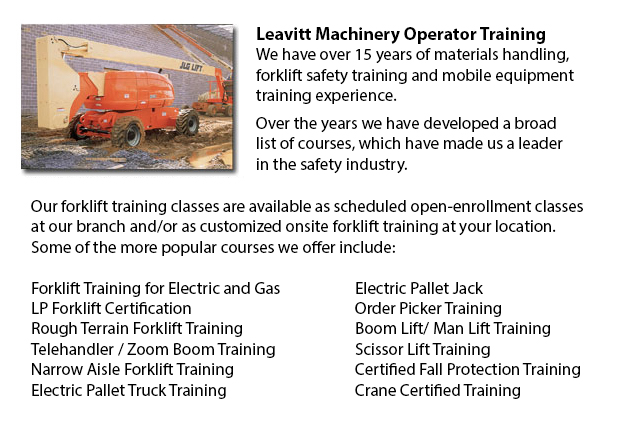
Kamloops Aerial Platform Training - Aerial hoists might be used to accomplish certain unique duties done in hard to reach aerial spaces. A few of the duties associated with this kind of lift include performing regular preservation on buildings with lofty ceilings, repairing phone and utility cables, raising burdensome shelving units, and trimming tree branches. A ladder could also be utilized for many of the aforementioned tasks, although aerial lifts offer more safety and strength when properly used.
There are a number of different types of aerial hoists existing, each being capable of performing moderately unique tasks. Painters will sometimes use a scissor lift platform, which can be used to reach the 2nd story of buildings. The scissor aerial hoists use criss-cross braces to stretch and extend upwards. There is a platform attached to the top of the braces that rises simultaneously as the criss-cross braces lift.
Cherry pickers and bucket lift trucks are another variety of the aerial lift. Usually, they contain a bucket at the end of a long arm and as the arm unfolds, the attached bucket platform rises. Platform lifts use a pronged arm that rises upwards as the lever is moved. Boom lift trucks have a hydraulic arm which extends outward and lifts the platform. All of these aerial lifts require special training to operate.
Through the Occupational Safety & Health Association, also called OSHA, instruction courses are on hand to help ensure the workforce meet occupational principles for safety, machine operation, inspection and maintenance and machine cargo capacities. Employees receive certification upon completion of the lessons and only OSHA certified personnel should run aerial lift trucks. The Occupational Safety & Health Organization has formed guidelines to maintain safety and prevent injury when utilizing aerial lift trucks. Common sense rules such as not using this apparatus to give rides and ensuring all tires on aerial hoists are braced so as to prevent machine tipping are observed within the rules.
Sadly, data reveal that in excess of 20 aerial lift operators die each year when operating and almost ten percent of those are commercial painters. The bulk of these mishaps were brought on by improper tie bracing, therefore several of these may well have been prevented. Operators should ensure that all wheels are locked and braces as a critical security precaution to stop the device from toppling over.
Other suggestions involve marking the surrounding area of the machine in an observable way to protect passers-by and to guarantee they do not approach too close to the operating machine. It is crucial to ensure that there are also 10 feet of clearance between any electrical lines and the aerial lift. Operators of this apparatus are also highly recommended to always wear the appropriate safety harness when up in the air.
-
Kamloops Counterbalance Forklift Training
Kamloops Counterbalance Forklift Training - Counterbalance Forklift Training courses are always in high demand. The Counterbalance forklift is a forklift which is made with a weight which counters the balance, equally spreading the weight of the load... More -
Kamloops Manlift Certification
Kamloops Manlift Certification - The Manlifts and Elevated Platforms program offers training on the rules, regulations and proper application of safe operating measures and work practices included in daily activities for people who work making use of... More -
Kamloops Boom Lift Training
Kamloops Boom Lift Training - Elevated work platforms, likewise referred to as aerial platforms, allow workers to carry out tasks at heights that will otherwise be not reachable. There are various styles of lifts designed for different site applicati... More -
Operator Safety Certification | Re-Qualification Certification | In-House Instructor Certification in Kamloops
Forklifts are used in just about all industrial construction sites and in warehouse operations and in boat yards. The reach feature of a lift truck is a vital component used in several applications like for instance when a shelving system is being us... More -
Kamloops Manlift Safety Training
Kamloops Manlift Safety Training - It is essential for competent Manlift operators to be aware of the connected dangers that come with particular kinds of scissor lifts. They must be able to operate the scissor lift in a way that protects not only th... More -
Kamloops Crane Training Schools
Kamloops Crane Training Schools - We have designed several programs for Mobile Crane Operation at our Crane Training Schools. These programs are recommended for the experienced operator who requires certification or re-certification, and for inexperi... More -
Skid Steer Loader Certification in Kamloops
The engine powered skid-steer loader consists of a rigid and small frame, outfitted together with lift arms which could attach to a lot of industrial attachments and tools to perform several labor saving jobs. Typically, skid-steer loaders are four-w... More -
Kamloops Heavy Equipment License
Kamloops Heavy Equipment License - A heavy equipment license could be acquired by taking a certification and preparation course at a private training school or a vocational school. This license would qualify you to operate various types of heavy mach... More

Forklift Certification Kamloops
TOLL FREE: 1-888-254-6157
Kamloops, British Columbia
forkliftcertificationkamloops.com/
Email Us
About Us


